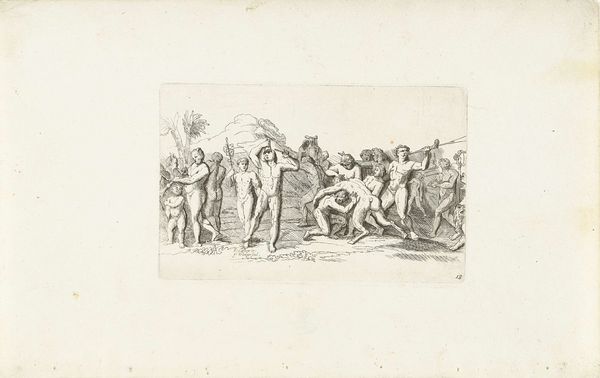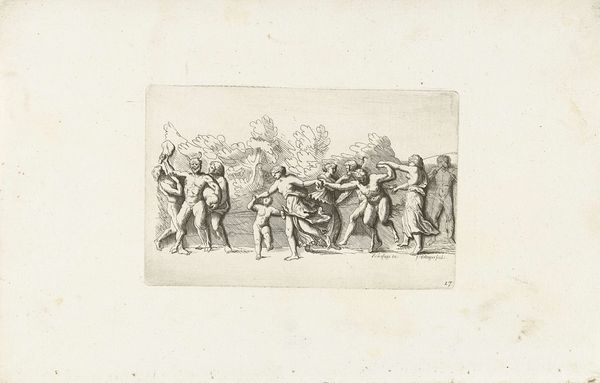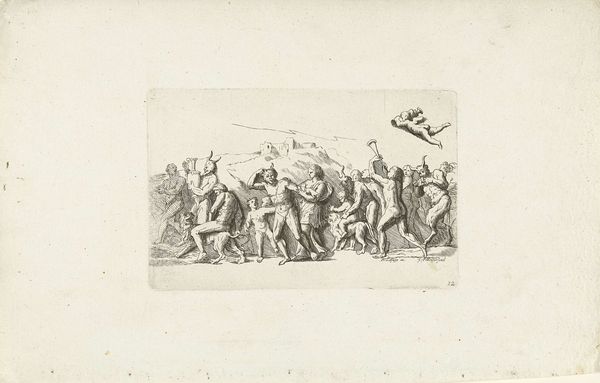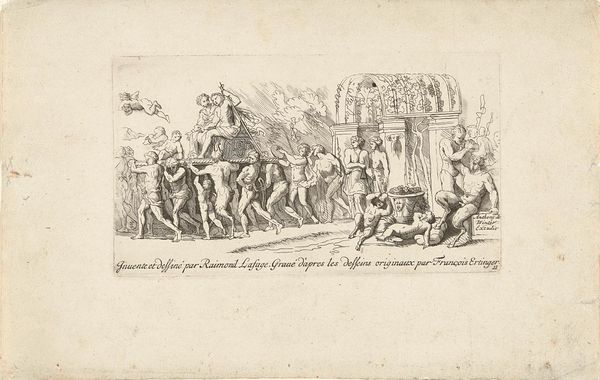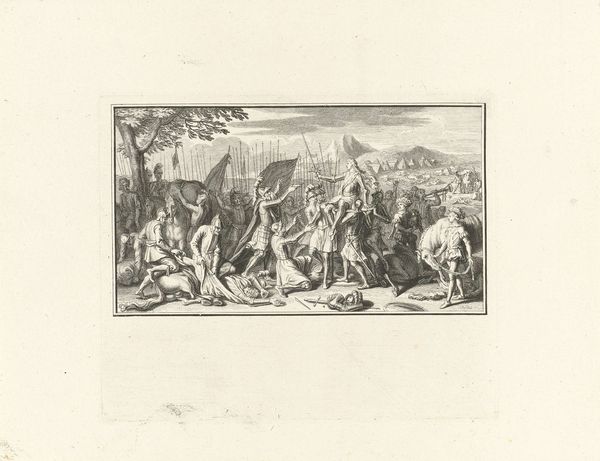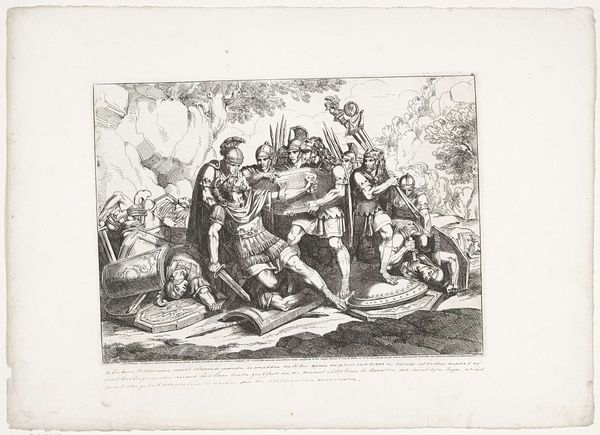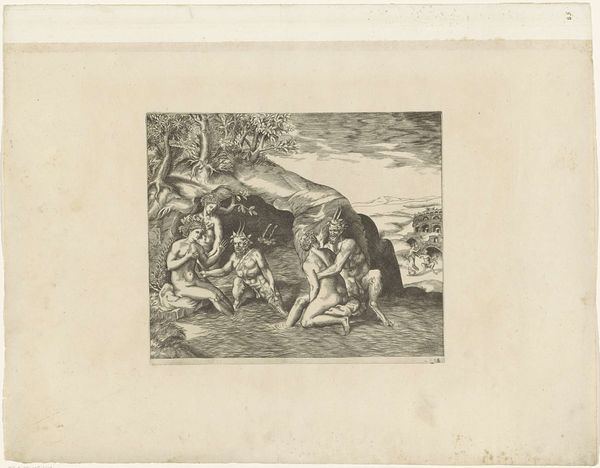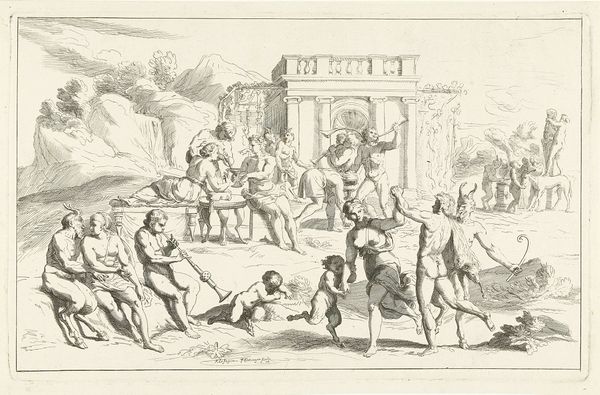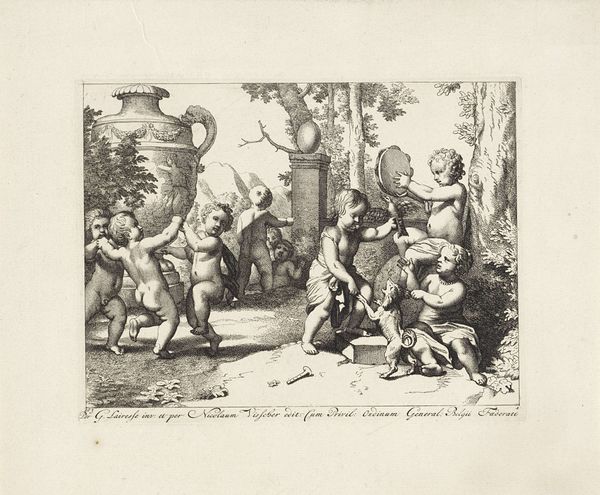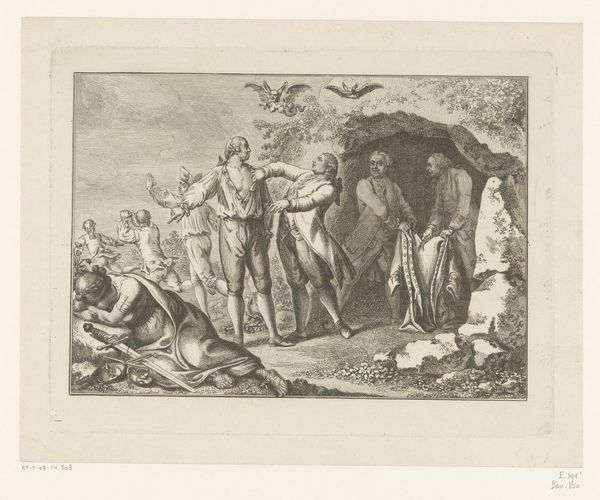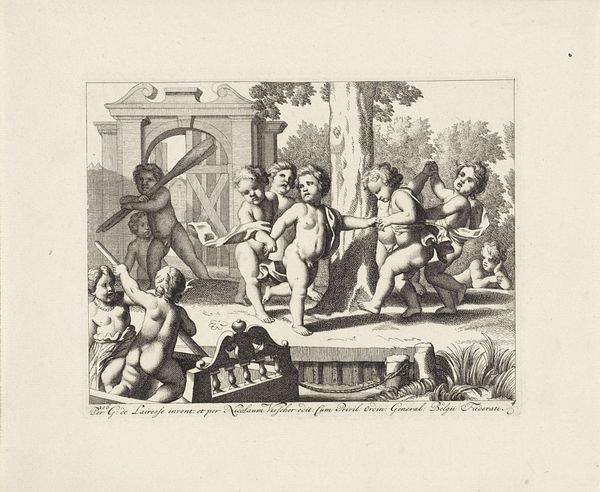
print, engraving
#
baroque
# print
#
old engraving style
#
figuration
#
pen-ink sketch
#
pen work
#
nude
#
engraving
Dimensions: height 103 mm, width 163 mm
Copyright: Rijks Museum: Open Domain
Editor: This engraving, "Bacchanten scenes", made sometime between 1652 and 1707 by Franz Ertinger, shows a flurry of human figures in an antique style, almost like a rediscovered Roman fresco. What's fascinating to me is the way the lines feel both chaotic and carefully rendered at the same time. What strikes you about this piece? Curator: This piece offers a fascinating insight into the material culture of printmaking during that period. Notice the technical skill involved in creating the image through engraving; how Ertinger, through focused labour, uses line and tonal variation to evoke the debauchery of the scene. Editor: Right, the density of lines to create shadow is remarkable, like tiny metal shavings precisely placed. How do you think the average person at the time would have consumed this kind of image? Curator: These engravings, relatively inexpensive compared to paintings, democratized access to classical themes. This work served as a commodity, and the means of distribution and reception speaks volumes about the society it circulated within. Printmaking techniques made art affordable, creating new modes of cultural consumption. This challenges the traditional high/low art dichotomy, wouldn't you say? Editor: I hadn’t thought of it that way, but it is intriguing that this image—reproducing a potentially very elite, classical subject—was disseminated in such a materially accessible form. How subversive. Curator: Precisely. The material reality of this engraving – the paper, ink, and the very act of its mass production – is just as important to consider as the mythological scene it depicts. What began as skillful handwork has resulted in an item, widely dispersed and exchanged within 17th century trade routes. What new avenues for inquiry does this consideration open for you? Editor: I think it gives a whole new perspective of how artistic labor interacts with cultural values in a given time and context. Thank you for sharing your expertise! Curator: Indeed, thinking about process and dissemination, offers so much when experiencing an artwork like this!
Comments
No comments
Be the first to comment and join the conversation on the ultimate creative platform.
